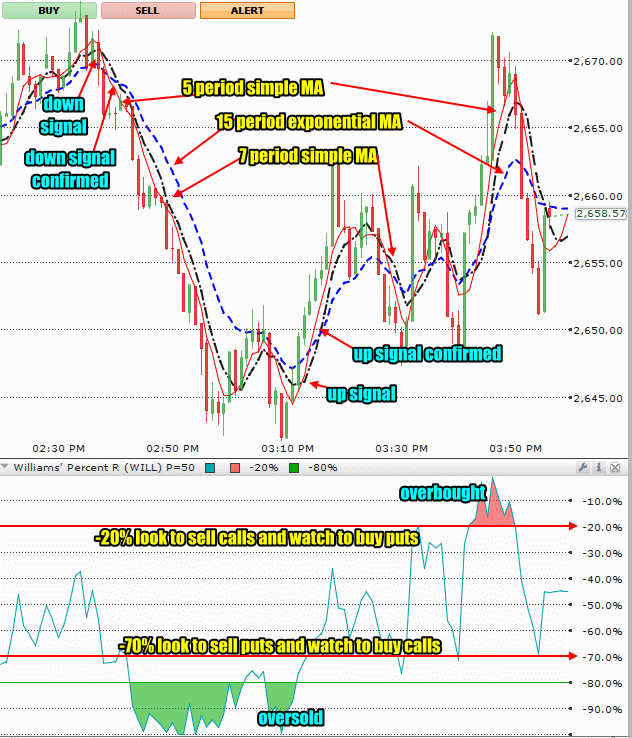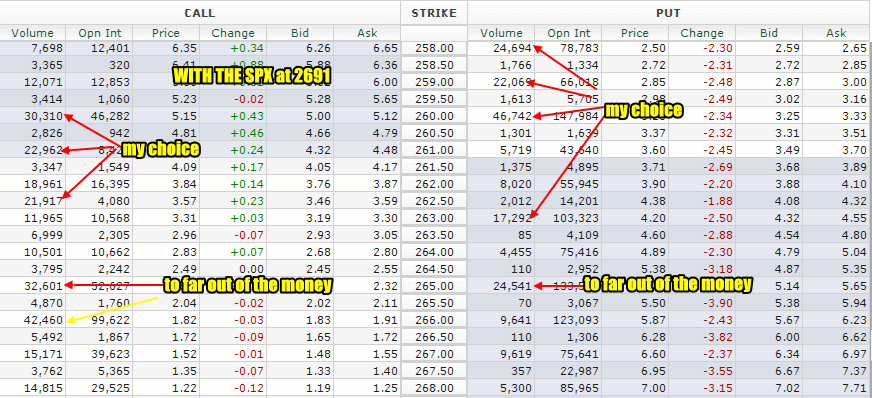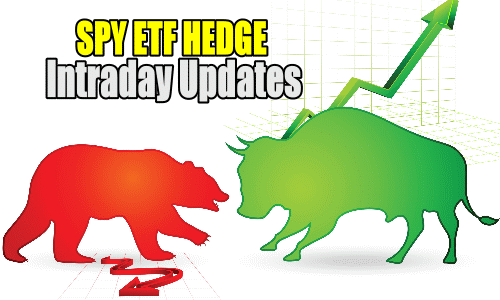Dec 2 2019 – The Outlook
Historically the first trading day of December has been negative despite the month being positive. The outlook from China is good on factory activity but remains poor on a resolution this month for the trade tariff war. Meawhile this morning stocks moved lower on weak domestic manufacturing data as the ISM Manufacturing index fell to 48.1 from 48.3 in November.
This Friday we get the jobs numbers for November so that will mean a new SPY Trade Ahead Of Unemployment Numbers. I will outline that trade before Friday to give members a chance to see how I plan to setup that trade.
We will see a bit higher volatility today. I will be trading Dec 6 expiry.
I am expecting another tight day of the SPY trading around a 15 point move.
SPX Support and Resistance Levels
- I am expecting 3145 to be resistance
- I am expecting 3120 to be support.
Remember that nothing is in real-time for any trades. It is impossible to provide these trades in real-time. By the time I post the trade, minutes have passed. Remember my primary focus is on assisting members with their trades, posting trades done intraday using other strategies and not real-time trading but I do my best to keep these trades current. I urge investors to join my twitter feed as I try to post there as quickly as I can, when I see a change or am getting ready for another SPY trade as well as other trades outside of the SPY. If you want as close to real-time as I can provide, my twitter feed is best. As well, you can ask questions during the day. I have twitter open most of the day and try to answer questions posed.
Date |
Dec 2 2019
|
| $530.00 | Profit / Loss For Today |
| $10,000 | Capital Available For Use |
| 0% | Return Against Available Capital |
| Trades are in reverse chronological order – most recent on top |
Below are the trades done today.
| Trade Details (Trades are in reverse chronological order) |
| Trade#1 Ended Profit/Loss Trade#1 = $530.00 |
| 12:09 AM: // Sold 10 call contracts for Dec 6 2019 expiry at the $313.00 call strike for $1.32 // Returned: $1,320.00 // Commission: $5.00 |
| 12:09 AM: // Sold 10 call contracts for Dec 6 2019 expiry at the $313.00 call strike for $1.31 // Returned: $1,310.00 // Commission: $5.00 |
| 12:06 AM: // Sold 20 call contracts for Dec 6 2019 expiry at the $313.00 call strike for $1.31 // Returned: $2,620.00 // Commission: $10.00 |
| Average: // Capital At Risk= $4,700.00 / 40 Contracts = $1.175 per contract |
| 11:36 AM: // Bought 20 call contracts for Dec 6 2019 expiry at the $313.00 call strike for $1.08 // Invested: $2,160.00 // Commission: $10.00 |
| 11:23 AM: // Sold 10 call contracts for Dec 6 2019 expiry at the $313.00 call strike for $1.27 // Returned: $1,270.00 // Commission: $5.00 |
| Average: // Capital At Risk= $3,795.00 / 30 Contracts = $1.265 per contract |
| 11:23 AM: Should be able to get to at least 3118 here. Up signal generated at 11:20 AM. |
| 11:11 AM: // Bought 10 call contracts for Dec 6 2019 expiry at the $313.00 call strike for $1.08 // Invested: $1,080.00 // Commission: $5.00 |
| 10:06 AM: // Bought 20 call contracts for Dec 6 2019 expiry at the $313.00 call strike for $1.35 // Invested: $2,700.00 // Commission: $10.00 |
| 10:06 AM: I missed the drop this morning as I was busy setting up Put Selling trades. |
| 10:06 AM: Trade#1 – Calls bought on expected bounce. |
1 Minute Trading Method Explained
The one minute method is what I use for trading the SPY ETF.
To start I setup the SPX index for 1 minute time frame. The signal lines in use are the 5 period simple moving average (SMA) (red solid below), 7 period simple moving average (SMA) (black dot-dash line below) and the 15 period exponential moving average (EMA) (blue dash line below).
I use the 5 period as an early warning that a trade may be appraoching. When the five period falls below the 7 period as you can see in the chart below, it signals a down signal. When the 7 period falls below the 15 period and the 5 period is below both the 7 and 15 period, it confirms the down signal. I normally place my trade as the 5 period falls below the 15 period and the 7 period turns down. If after buying the spy put contracts I do not get the confirmed down signal I look for a chance to sell out for a break-even or very small loss.
When the 5 period moves above the 7 period it is an up signal for my trades. When the 7 period moves above the 15 period and the 5 period is above both the 7 and 15 period moving averages, the up signal is confirmed. I usually buy spy calls once I see the 5 period move above the 15 period and the 7 period is turning up almost ready to cross above the 15 period. If after buying the call options, there is no confirmed up signal, I usually look for a chance to sell out of the calls for at least a break-even or a small loss.
The Williams %R is set for a period of 50. With the signals move above -20% this is a signal of the S&P being overbought. At this reading, I watch for my chance to sell call options I have bought once the S&P begins to turn sideways or back down. Then I look for a chance to buy put options by watching the 5 period moving average for a down signal
A reading of -80% is an oversold signal. However I am using -70% as a signal. At 70% I look for a chance to sell put options I have bought when the S&P looks like it may turn back up or turns sideways. Then I watch the 5 period moving average for the start of a potential up signal to buy call options.
I take small profits and keep the size of my purchases to 5 or 10 contracts. If I am doing a repair of a trade where I bought at the wrong time and the S&P moved against my position, I sometimes buy as many as 20 options to try to repair a trade and return it to profitability. It is not as easy to trade as it may seem and I always suggest paper trading any strategy before risking capital.

Spy Trading Parameters
SPY ETF Trade Tips
1) Choosing Expiry Periods and Strikes
- On a Monday, Tuesday, Wednesday and Thursday I use the same week Spy options. That means on a Monday I am trading the same week Friday options expiration.
- For Friday I use the following week expiry period as long as there is enough volume otherwise I use the same week for Friday morning and then move in the afternoon to the following Friday expiration period.
- For short weeks I use the following week expiry period
- For put and call options I pick the higher volume strikes which are close to where the S&P is trading. If there are higher volumes but further out from where the S&P is trading I usually ignore them.
- High volume is important for the trades to be successful. When I buy or sell I want the trade done immediately. Prices change rapidly when trading the SPY ETF and a 10 cents move can sometimes mean a loss instead of a profit.
- I take small profits quickly when they develop and try not to time a big swing.
- I like to scale out of a trade. For example, if I have bought 10 contracts, I sell 2 or 3 at a time as the S&P moves in my favor. This way I tend to earn a bit more than trying to pick the end of a move in the market, up or down and try to sell them all at once.
- Iusually watch the williams%R for overbought and oversold signals and then wait to see where is a trade developing before buying spy options.

2) Averaging A Trade Versus A Stop-Loss
For a stop-loss probably 25 to 30 cents would work. However in the SPY ETF, prices can whipsaw a lot even intraday when the market is moving sideways. If investors can stand taking a loss perhaps 50 cents would be better. I never had a lot of luck with a stop-loss trading the SPY ETF intraday. Instead I like to take small profits as the trade progresses. If a trade moves against my position (if I bought puts and the SPX moves higher) I prefer to average my price higher or lower when there is a big difference from what I paid to what I can now pay. If a trade is working out in my favor, I rarely if ever average my price higher. I prefer to take profits and then set up a new trade.
3) The Advantage Of Small Positions
I prefer to stay with small quantities when trading in the SPY. A large position for me to start would be 10 contracts. By staying small at the start of a trade I can average my entry cost lower when I have entered at the wrong time and the SPX moves against my position. Through starting small, adding in a few more option contracts can quickly impact the price I am holding my options at. For example if I buy 5 options to start at $1.50 and the trade goes the wrong way, I can buy 10 contracts for perhaps 80 cents as the trade moves against my position. This reduces my cost on 5 at $1.50 to 15 at $1.03. Often this averaging my cost lower is all it takes to get out of a losing trade with a profit. I start small and if needed, expand on the trade to protect the capital being risked.
Nothing Is In Real-Time
Remember that nothing is in real-time for any trades. It is impossible to provide these trades in real-time. By the time I post the trade, minutes have passed. Remember my primary focus is on assisting members with their trades, posting trades done intraday using other strategies and not real-time trading but I do my best to keep these trades current. I urge investors to join my twitter feed as I try to post there as quickly as I can, when I see a change or am getting ready for another SPY trade as well as other trades outside of the SPY. If you want as close to real-time as I can provide, my twitter feed is best. As well, you can ask questions during the day. I have twitter open most of the day and try to answer every question posed.
Disclaimer: There are risks involved in all investment strategies and investors can and do lose capital. Trade at your own risk. Stocks, options and investing are risky and can result in considerable losses. None of the strategies, stocks or information discussed and presented are financial or trading advice or recommendations. Everything presented and discussed are the author’s own trade ideas and opinions which the author may or may not enter into. The author assumes no liability for topics, ideas, errors, omissions, content and external links and trades done or not done. The author may or may not enter the trades mentioned. Some positions in mentioned stocks may already be held or are being adjusted. Read the full disclaimer.
Questions? Use the form below or ASK TEDDI


